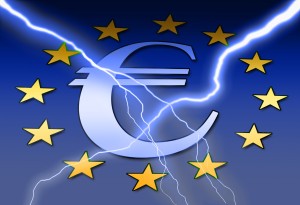There are finally signs that the eurozone is beginning to regain some strength, however, there is still some way to go. If Europe is to regain sustainable, long-term growth competitiveness gaps between European nations need to be addressed; if Europe is to compete with the rest of the world there needs to be increased emphasis on innovation and R&D, and SMEs must be given better access to funding.
Michel Barnier, the EU’s Single Market Commissioner, looks at the steps being taken at EU level and says that it’s time for Europe’s trade policy to be rethought.
More than five years after the onset of the financial crisis, Europe’s economic situation is still very fragile. After last year’s slight recession, growth is expected to be very modest in 2013. Unemployment in the euro area stands above 11 per cent and many small- and medium-sized companies still have trouble finding finance for new projects.
Against this backdrop, the EU hasn’t been passive. We are trying to restore stability and confidence through the most comprehensive EU financial regulation agenda ever. In just three years, we’ve put forward legislative proposals for all the financial regulation measures agreed by the G20; and we’re going beyond that with measures to prevent the manipulation of benchmarks like the LIBOR (London Interbank Offered Rate) accompanied by an ongoing reflection on structural reforms in the banking sector. This year I plan to propose legislation on shadow banking.
EU member states have also decided to take strong measures to address the negative feedback loop between banks and sovereign debt. The European Stability Mechanism (ESM) that has now entered into force will be able to re-capitalise banks directly once the new Single Supervisory Mechanism (SSM) for banks is in place. We are also working on the two other pillars needed to build a proper banking union—effective deposit guarantee and bank resolution mechanisms, with a proposal for a single European resolution mechanism for member states participating in the SSM which I will present this year.
 Another encouraging step that would prevent a fresh surge in the sovereign debt crisis is that the process of fiscal consolidation is producing good results; the average government deficit of eurozone countries, which stood at 6.2 per cent of GDP in 2010, is expected to have shrunk to 3.6 per cent for 2012. The new ‘fiscal compact’ will, of course, involve stricter rules with structural deficits limited to 0.5 per cent.
Another encouraging step that would prevent a fresh surge in the sovereign debt crisis is that the process of fiscal consolidation is producing good results; the average government deficit of eurozone countries, which stood at 6.2 per cent of GDP in 2010, is expected to have shrunk to 3.6 per cent for 2012. The new ‘fiscal compact’ will, of course, involve stricter rules with structural deficits limited to 0.5 per cent.
We now have a genuine growth strategy in place, and EU leaders have agreed a compact for growth and jobs which includes EUR 120 billion-worth of new joint investments. We are also going to use our financial regulation agenda to promote growth, and a good example of this will be the calibrating of bank capital requirements with our legislative proposal on EU-wide venture capital funds as well as the upcoming reflection on our capacity to direct savings towards long-term investments. The structural reforms being implemented in EU member states and Europe-wide are decisive steps for the short and medium term, but if we want to put Europe back on the path to lasting growth I’m convinced we need to go further and take up two competitiveness-related challenges.
The first is that of the widening gaps in competitiveness between member states. To take just one example, according to Eurostat average labour costs in France are now 12 per cent higher than in Germany. Over the past ten years, labour costs in France have risen by about 40 per cent but only 18 per cent in Germany. Gaps of this order are simply unsustainable in a monetary union, and if the difficulties faced by some eurozone members are not dealt with rapidly they cannot fail to affect the others.
So how can these competitiveness gaps be reduced? Certainly not by hampering our most competitive economies, because that way Europe as a whole would lose competitiveness. Instead, what we should be doing is putting in place enhanced European economic governance alongside budgetary governance measures.
It’s vital to give more thought to the relative competitive positions of each of the European economies. In which sectors do individual countries have a competitive advantage and added value? What are the most promising areas for each to invest in?
As well as that, we must try and exploit to the full the existing framework, especially new economic governance tools like the ‘European semester’ for the co-ordination of national reform programmes so as to help each country develop its most competitive sectors.
We must also make better use of things like cohesion policy because since the start of this crisis, EUR 17 billion in cohesion funding has been re-directed towards research and innovation, SMEs and labour market policies to help the most vulnerable. We must use the EU’s structural funds to consolidate those comparative advantages that exist, especially by investing in infrastructure and by training workers for the most promising sectors.
 If better economic governance is to reduce Europe’s competitiveness gaps it must be based on the solid foundation of a single market that works. We need to deepen our internal market, and that’s the aim of the Single Market Act we launched in April 2011. It’s made up of 50 proposals and 12 key actions to make life easier for Europe’s 22 million companies and 500 million consumers through the creation of a genuine digital single market, better recognition across Europe of professional qualifications through an EU-wide professional card, the simplification of EU public procurement rules, especially for SMEs, and the full application of the Services Directive, which alone could, by 2020, add up to 2.6 points to the EU’s GDP.
If better economic governance is to reduce Europe’s competitiveness gaps it must be based on the solid foundation of a single market that works. We need to deepen our internal market, and that’s the aim of the Single Market Act we launched in April 2011. It’s made up of 50 proposals and 12 key actions to make life easier for Europe’s 22 million companies and 500 million consumers through the creation of a genuine digital single market, better recognition across Europe of professional qualifications through an EU-wide professional card, the simplification of EU public procurement rules, especially for SMEs, and the full application of the Services Directive, which alone could, by 2020, add up to 2.6 points to the EU’s GDP.
As to the 12 new priority actions, they support four drivers for growth—fully integrated European energy and transport networks, better cross-border mobility of citizens and businesses, the digital economy and improved social cohesion.
As well as the competitiveness gaps between EU countries, a second challenge is that of Europe’s competitiveness vis-à-vis the rest of the world. Despite tough competition from China or India, we can still be big producers of manufactured goods as well as services provided we have the courage to launch a modern industrial policy based on innovation. After all, the whole project of European integration was born out of an industrial policy when Jean Monnet and Robert Schuman proposed the pooling of coal and steel.
Sixty years on from that simple industrial beginning of the European Union it’s time to think about new common investments targeted at promising sectors like clean products and vehicles, bio-based products, key enabling technologies and smart grids. So how best can we promote these technologies? The Commission’s recent communication on industrial policy drafted under Antonio Tajani’s leadership offers an overall vision of this problem. And, from where I stand, four issues need to be tackled simultaneously.
First, we need to create the right conditions for innovation, particularly by improving innovative SMEs’ access to finance. Only two per cent of SMEs’ funding needs are covered in Europe by venture capital, compared to 14 per cent in the US. The Commission has proposed the creation of a Europe-wide market for venture capital to allow these funds to raise money and to invest anywhere in the EU. In addition to that I hope that final agreement on the single European patent, to dramatically reduce the cost of protecting innovations, is at last within our grasp.
Second, we need to invest much more resolutely in research. It isn’t inevitable that young researchers from European universities leave for greener fields elsewhere. We must give our universities greater resources, along the lines of the European Institute of Technology which brings together innovative companies, research centres and universities to create the conditions for innovation.
Third, we must give European companies the resources to invest in research and the development of prototypes. One way to do this is to target public funding in areas identified as of strategic importance, just as the United States, China and Korea all invest heavily to support their own strategic sectors. The EU’s competition Commissioner Joaquín Almunia has now adapted our rules on state aid to make it possible to provide state support to underpin agreed EU guidelines.
And fourth, in the area of trade policy we must show openness without being naive. The EU cannot go on being one of the most open trading areas in the world while our own companies have difficulty entering other countries’ markets. That is why trade Commissioner Karel De Gucht and I have proposed a regulation making it possible to impose reciprocity in public procurement on countries that don’t practise this.
All these are steps under preparation. They don’t stand in the way of the strong measures needed to restore Europe’s economic growth in the short and medium term, but they are vital if this new growth is to be sustainable.
Michel Barnier is the European Commissioner for the Internal Market and Services. michel.barnier@ec.europa.eu.
This article originally appeared on www.europesworld.org.



“And fourth, in the area of trade policy we must show openness without being naive. The EU cannot go on being one of the most open trading areas in the world while our own companies have difficulty entering other countries’ markets. That is why trade Commissioner Karel De Gucht and I have proposed a regulation making it possible to impose reciprocity in public procurement on countries that don’t practise this.”
I fully agree with this and I discussed several times the “Reciprocity Draft Law” with Mr. De Gucht. I think opposition to the law is hypocritical, short-sighted and naive. As Chair of the Public Procurement Working Group in the European Chamber (Beijing), I see enough of the market access problems for EU companies.
On the other hand, Mr. Barnier misses some fundamental issues. In my book “Toxic Capitalism” I underline the need for drastic structural reforms in most of the EU countries. There is no point of talking about R&D, SME financing etc. if the governments are manipulated by vested interests, make life miserable for SME, stick to outdated labor laws and so forth. Like in Belgium, who would want to start up a small business? The system is all turned against private initiative. No wonder I work and live in Beijing.